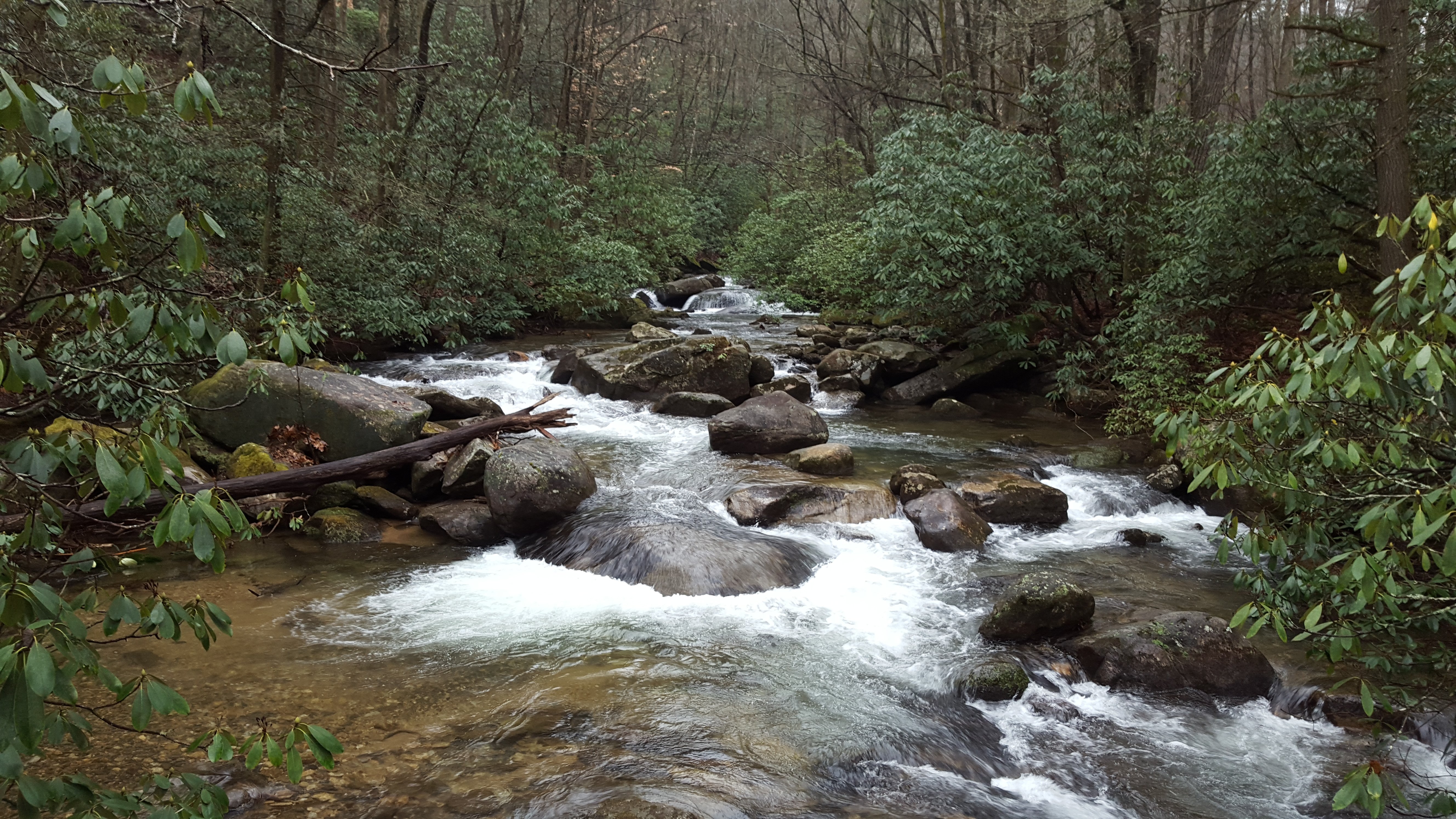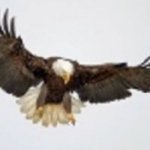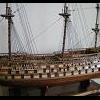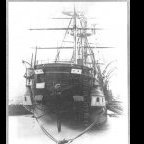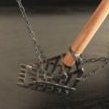Supplies of the Ship Modeler's Handbook are running out. Get your copy NOW before they are gone! Click here to order
×
MORE HANDBOOKS ARE ON THEIR WAY! We will let you know when they get here.
×
-
Posts
10,208 -
Joined
-
Last visited
Reputation Activity
-
 ccoyle got a reaction from Egilman in Salmson 2 A.2 by ccoyle - FINISHED - WAK - 1/33 - CARD - in markings of aircraft flown by Capt. Arthur J. Coyle, 1st Squadron, US Air Service, Autumn 1918
ccoyle got a reaction from Egilman in Salmson 2 A.2 by ccoyle - FINISHED - WAK - 1/33 - CARD - in markings of aircraft flown by Capt. Arthur J. Coyle, 1st Squadron, US Air Service, Autumn 1918
Well, I went ahead and made my own sights. Watch for the "Big Reveal" soon!
-
 ccoyle reacted to Tim Moore in Salmson 2 A.2 by ccoyle - FINISHED - WAK - 1/33 - CARD - in markings of aircraft flown by Capt. Arthur J. Coyle, 1st Squadron, US Air Service, Autumn 1918
ccoyle reacted to Tim Moore in Salmson 2 A.2 by ccoyle - FINISHED - WAK - 1/33 - CARD - in markings of aircraft flown by Capt. Arthur J. Coyle, 1st Squadron, US Air Service, Autumn 1918
It’s another beauty! Very well done, especially with all those challenges.
-
 ccoyle got a reaction from BLACK VIKING in Salmson 2 A.2 by ccoyle - FINISHED - WAK - 1/33 - CARD - in markings of aircraft flown by Capt. Arthur J. Coyle, 1st Squadron, US Air Service, Autumn 1918
ccoyle got a reaction from BLACK VIKING in Salmson 2 A.2 by ccoyle - FINISHED - WAK - 1/33 - CARD - in markings of aircraft flown by Capt. Arthur J. Coyle, 1st Squadron, US Air Service, Autumn 1918
The Big Reveal!
This one is as done as it's gonna get. It is not, in fact, as done as it could be, because I have made an informed decision to leave off some rigging lines that are both poorly documented in the kit diagrams and not well-attested in photos of either other models or real aircraft. Truth is, only die-hard purists may notice their absence. As I have hinted at before, this is not one of the better-designed kits I have worked on. There were many niggling omissions in the diagrams, which left many of the more nuanced construction bits pretty much up to the builder's imagination. I would give this kit a three out of five stars on the design and ease of assembly. The artwork, as I said at the beginning, is very nice and gives the model a good measure of 'curb appeal'. Enjoy the pictures!
-
 ccoyle got a reaction from rlwhitt in Salmson 2 A.2 by ccoyle - FINISHED - WAK - 1/33 - CARD - in markings of aircraft flown by Capt. Arthur J. Coyle, 1st Squadron, US Air Service, Autumn 1918
ccoyle got a reaction from rlwhitt in Salmson 2 A.2 by ccoyle - FINISHED - WAK - 1/33 - CARD - in markings of aircraft flown by Capt. Arthur J. Coyle, 1st Squadron, US Air Service, Autumn 1918
The Big Reveal!
This one is as done as it's gonna get. It is not, in fact, as done as it could be, because I have made an informed decision to leave off some rigging lines that are both poorly documented in the kit diagrams and not well-attested in photos of either other models or real aircraft. Truth is, only die-hard purists may notice their absence. As I have hinted at before, this is not one of the better-designed kits I have worked on. There were many niggling omissions in the diagrams, which left many of the more nuanced construction bits pretty much up to the builder's imagination. I would give this kit a three out of five stars on the design and ease of assembly. The artwork, as I said at the beginning, is very nice and gives the model a good measure of 'curb appeal'. Enjoy the pictures!
-
 ccoyle reacted to Papa in Enchantress by Papa - JSC - 1/400 - CARD
ccoyle reacted to Papa in Enchantress by Papa - JSC - 1/400 - CARD
She is getting close to the end. Need to add the saluting guns, masts, boats and davits, and some remaining deck equipment. The kit didn’t come with railings and I am wondering if I should find some 1/400 photo etched railings for her.
-

-
 ccoyle got a reaction from Dave_E in Salmson 2 A.2 by ccoyle - FINISHED - WAK - 1/33 - CARD - in markings of aircraft flown by Capt. Arthur J. Coyle, 1st Squadron, US Air Service, Autumn 1918
ccoyle got a reaction from Dave_E in Salmson 2 A.2 by ccoyle - FINISHED - WAK - 1/33 - CARD - in markings of aircraft flown by Capt. Arthur J. Coyle, 1st Squadron, US Air Service, Autumn 1918
Well, I went ahead and made my own sights. Watch for the "Big Reveal" soon!
-
 ccoyle reacted to Dan Poirier in Norwegian Sailing Pram by Dan Poirier - FINISHED - Model Shipways - 1:12
ccoyle reacted to Dan Poirier in Norwegian Sailing Pram by Dan Poirier - FINISHED - Model Shipways - 1:12
I recently completed my first ship model, the Model Shipways' Lowell Grand Banks Dory. Yesterday I started my second, the Model Shipways' Norwegian Sailing Pram.
I thought the boat diagram on page 3 of the instructions was awfully small for my old eyes, so I made an enlarged copy. (I might need to blow it up even more. We'll see.)
I started by cutting out the transom knees and sanding off the char, trying to keep the edges square.
I cut out the bow transom and carefully drew center lines on it.
Then I looked closer at the instructions, and realized I was supposed to draw the lines on the other side. Oops!
Next, I cut out the lower stern transom. Given my previous error, I followed the instructions scrupulously for sanding a bevel on the upper edge, "Turn the transom so that the bevel marks are facing away from you." So I sanded the bevel with the marks away from the bevel guide. (I took the following picture looking at the side that was away from me when I was sanding, for a better view.)
Now, looking closer at the pictures in the instructions, and reading some other build logs of this model, I believe the bevel was supposed to be sanded in the opposite orientation than I did. Oh well. I'll figure out a way to transfer the markings to the other side, and carry on as if they were there all the time.
Next to do: some gluing. The instructions recommended white glue, not yellow wood glue, so I've got some Elmer's Glue-all on order.
-
 ccoyle got a reaction from Canute in Salmson 2 A.2 by ccoyle - FINISHED - WAK - 1/33 - CARD - in markings of aircraft flown by Capt. Arthur J. Coyle, 1st Squadron, US Air Service, Autumn 1918
ccoyle got a reaction from Canute in Salmson 2 A.2 by ccoyle - FINISHED - WAK - 1/33 - CARD - in markings of aircraft flown by Capt. Arthur J. Coyle, 1st Squadron, US Air Service, Autumn 1918
Another quick update: I have completed everything mentioned in the last post except the Lewis guns. There will be no more pics until the "Big Reveal" -- sorry!
On a side note, since the plane has two different types of MG armament in two different mountings, it also has two different gun sights. An unimpressive paper vane sight is provided for the Lewis mount, and a template is provided for scratch-building a ring sight for the Vickers gun. I have considered acquiring after-market replacement parts for these (such as the 1/32 scale 3D-printed sets from Eduard), but have so far not been able to find any in stock on this side of the pond. I found some from a European vendor, but the cost was going to be north of 20 euros to get them here -- that's more than the kit itself costs, so that's a no from me. Anybody have any leads for me?
-
 ccoyle reacted to Egilman in Salmson 2 A.2 by ccoyle - FINISHED - WAK - 1/33 - CARD - in markings of aircraft flown by Capt. Arthur J. Coyle, 1st Squadron, US Air Service, Autumn 1918
ccoyle reacted to Egilman in Salmson 2 A.2 by ccoyle - FINISHED - WAK - 1/33 - CARD - in markings of aircraft flown by Capt. Arthur J. Coyle, 1st Squadron, US Air Service, Autumn 1918
Gaspatch from Greece has shipping to the world for 13E.... They have several variations of both in 1/32 scale...
Vickers US built... https://www.ebay.com/itm/175473761772
Vane Sights... https://www.ebay.com/itm/276443512739
Lewis Gun... https://www.ebay.com/itm/175473752654
All US based evilbay...
Victory Models out of Ft Meyers FL. has all three in stock.... https://www.victorymodels.com/search?page=2&q=*Gaspatch*guns*&type=product
-
 ccoyle got a reaction from Ryland Craze in Salmson 2 A.2 by ccoyle - FINISHED - WAK - 1/33 - CARD - in markings of aircraft flown by Capt. Arthur J. Coyle, 1st Squadron, US Air Service, Autumn 1918
ccoyle got a reaction from Ryland Craze in Salmson 2 A.2 by ccoyle - FINISHED - WAK - 1/33 - CARD - in markings of aircraft flown by Capt. Arthur J. Coyle, 1st Squadron, US Air Service, Autumn 1918
Another quick update: I have completed everything mentioned in the last post except the Lewis guns. There will be no more pics until the "Big Reveal" -- sorry!
On a side note, since the plane has two different types of MG armament in two different mountings, it also has two different gun sights. An unimpressive paper vane sight is provided for the Lewis mount, and a template is provided for scratch-building a ring sight for the Vickers gun. I have considered acquiring after-market replacement parts for these (such as the 1/32 scale 3D-printed sets from Eduard), but have so far not been able to find any in stock on this side of the pond. I found some from a European vendor, but the cost was going to be north of 20 euros to get them here -- that's more than the kit itself costs, so that's a no from me. Anybody have any leads for me?
-
 ccoyle got a reaction from GrandpaPhil in Salmson 2 A.2 by ccoyle - FINISHED - WAK - 1/33 - CARD - in markings of aircraft flown by Capt. Arthur J. Coyle, 1st Squadron, US Air Service, Autumn 1918
ccoyle got a reaction from GrandpaPhil in Salmson 2 A.2 by ccoyle - FINISHED - WAK - 1/33 - CARD - in markings of aircraft flown by Capt. Arthur J. Coyle, 1st Squadron, US Air Service, Autumn 1918
Another quick update: I have completed everything mentioned in the last post except the Lewis guns. There will be no more pics until the "Big Reveal" -- sorry!
On a side note, since the plane has two different types of MG armament in two different mountings, it also has two different gun sights. An unimpressive paper vane sight is provided for the Lewis mount, and a template is provided for scratch-building a ring sight for the Vickers gun. I have considered acquiring after-market replacement parts for these (such as the 1/32 scale 3D-printed sets from Eduard), but have so far not been able to find any in stock on this side of the pond. I found some from a European vendor, but the cost was going to be north of 20 euros to get them here -- that's more than the kit itself costs, so that's a no from me. Anybody have any leads for me?
-
 ccoyle got a reaction from mtaylor in Salmson 2 A.2 by ccoyle - FINISHED - WAK - 1/33 - CARD - in markings of aircraft flown by Capt. Arthur J. Coyle, 1st Squadron, US Air Service, Autumn 1918
ccoyle got a reaction from mtaylor in Salmson 2 A.2 by ccoyle - FINISHED - WAK - 1/33 - CARD - in markings of aircraft flown by Capt. Arthur J. Coyle, 1st Squadron, US Air Service, Autumn 1918
Another quick update: I have completed everything mentioned in the last post except the Lewis guns. There will be no more pics until the "Big Reveal" -- sorry!
On a side note, since the plane has two different types of MG armament in two different mountings, it also has two different gun sights. An unimpressive paper vane sight is provided for the Lewis mount, and a template is provided for scratch-building a ring sight for the Vickers gun. I have considered acquiring after-market replacement parts for these (such as the 1/32 scale 3D-printed sets from Eduard), but have so far not been able to find any in stock on this side of the pond. I found some from a European vendor, but the cost was going to be north of 20 euros to get them here -- that's more than the kit itself costs, so that's a no from me. Anybody have any leads for me?
-
 ccoyle reacted to Kevin in Belle Poule 1834 by Kevin - FINISHED - OcCre - 1/90 - French frigate - 6/24 to 2/25
ccoyle reacted to Kevin in Belle Poule 1834 by Kevin - FINISHED - OcCre - 1/90 - French frigate - 6/24 to 2/25
Stern gallery, balcony, gun port lids
a bit of trimming and the stern gallery template went on without any issues, a test fit of the bacony, and some trimming is required to get it all to line up where it meets the the the wrap around to the 1/4 gallery balcony, these side pieces have been fixed and the long gallery removed for now
keel fitted and the hull was the planked to the waterline, i am fitting copper tape to this build and not the cost reducing wood veneer including in the kit, an
Gunports
rightly or wrongly, i decided to go with all the lids shut, like in the photo and not the instructions
not my photo, came from this link (Thank you @wefalckLA BELLE POULE (1834) (maritima-et-mechanika.org)
but as with all these decisions i make it was not followed through very well, as the lids are removed from the lasered frets in the first place they are now undersized
-
 ccoyle reacted to Dan Poirier in Hello from Chapel Hill
ccoyle reacted to Dan Poirier in Hello from Chapel Hill
Hi! I've been browsing here for a while, learned a lot, and have completed the Lowell Grand Banks Dory - Model Shipways 1:24 model. I figured it was time I joined!
I've just started the Norwegian Sailing Pram - Model Shipways, 1:12 model, and am thinking about starting a build log. But I see there are a lot of build logs for that particular model already.
-
 ccoyle got a reaction from CiscoH in WASHINGTON GALLEY by yamsterman - 1/48 scale - POF
ccoyle got a reaction from CiscoH in WASHINGTON GALLEY by yamsterman - 1/48 scale - POF
Mick, whatever became of this build?
-
 ccoyle got a reaction from Greg Davis in Sciabecco 1753 by Greg Davis - FINISHED - Amati - 1:60 scale
ccoyle got a reaction from Greg Davis in Sciabecco 1753 by Greg Davis - FINISHED - Amati - 1:60 scale
Great work, Greg! Xebecs are just very interesting vessels -- very rakish-looking!
-
 ccoyle reacted to tmj in Gunboat Philadelphia 1776 by tmj
ccoyle reacted to tmj in Gunboat Philadelphia 1776 by tmj
As she was built, the Gunboat Philadelphia was started with the bottom planking being laid down. The flooring timbers were then positioned atop the bottom planking and temporarily 'toenailed' to the bottom planking, just to hold things together, until the bottom planking was effectively attached to the floor timbers via 1" wooden trunnels. Evidence of these temporary toenails are noticeably present on the actual Philidelphia as she sits in the museum today. After the bottom planking and flooring timbers were securely tree nailed together, the temporary toenails were removed, and the bottom was cut to its shape. Some folks wonder if this gunboat was built right side up, or upside down and flipped. The boat was a bit too big and awkward to be flipped. It was built right side up. Evidence of 'this' is due to a 2.75" diameter hole that was drilled through the bottom planking, approximately 48" forward of the sternpost... a hole that was plugged prior to launch. This hole was likely used as a drain to remove rainwater while the boat was being built in its upright position.
I hope to have the bottom planking cut and glued this weekend. I'll then cut out the bottom's shape. After that, I'll start on the floor timbers. This is a departure from the actual building process but will make it easier for me to construct in such a small scale, as following posts will explain and further illustrate.
-
 ccoyle reacted to tmj in Gunboat Philadelphia 1776 by tmj
ccoyle reacted to tmj in Gunboat Philadelphia 1776 by tmj
Armed with a few books, a good set of drawings from the Smithsonian, a set of calipers, a calculator and a brand-new box full of wood sheets and misc. sized strips of wood desperately wanting to become something of interest... I hereby declare this new build log as being ready and "Go for Launch!"
Please be forewarned. The Gunboat Philadelphia was hastily built, and in such... a lot of traditional practices typically observed in Navel Architecture were not utilized in the construction processes of this vessel, nor in the construction of her seven sisters. Haste was the "Order of the day" and 'time was of the essence'! Corners had to be cut, and 'cut they were'! If you see something that does not seem quite right in my build, well... you are probably correct! I'll be building this model just as its real life counterpart was 'actually' built, not how such a boat really 'should have' been built back in 1776. These gunboats simply were not built in tradition ways, nor were they built to last. They were built solely for a specific and temporary military purpose... and nothing else!
I'll be building this as a 'Navy-Board' style model. It will have full masting and rigging with furled sails. I'll also be leaving her sides open to expose the framing, interior structures, etc. Likewise with the decking. I'll be leaving parts of the deck planking off to expose the internals, with exception to the areas supporting the cannons, of course. I don't yet have a clear image as to where this model will actually wind up. I only have a mental concept of the effect that I wish to achieve once all is finally said and done.
Below is the current state of my CAD file showing the layout of the bottom of this vessel and the size of the strakes, number of planks per strake, and the positioning of the floor timbers. The red lines on the strakes denote where planks were actually joined to make up the individual strakes. These planks were not joined in the middle of the floor timbers. The floor timbers were too narrow for that due to the 1" diameter treenails used to attach the planks. Instead, the planks were joined together via 1.5" thick 'Butt-Block Splices' located 'between' floor timbers and/or wherever the joints landed, and butt-blocks could be effectively placed. If you look closely, you will also note that the bottom planking strakes are of various widths. Not a lot of consistency at all. I suppose that the builders were just using whatever widths of lumber that they had on hand in order to simply fill in the bottom of the boat. Last but not least... the floor timbers, themselves, 'also' vary in 'their' widths too! Not a lot of consistency there, either.
Even though these 'oddities' might look a bit 'off-putting' to some folks, I'm going to do my best to reflect them as they truly are/were in this scale build.
-
 ccoyle reacted to tmj in Gunboat Philadelphia 1776 by tmj
ccoyle reacted to tmj in Gunboat Philadelphia 1776 by tmj
1776 Gunboat Philadelphia
"Short in life, 'Long' in history!"
A Build Log
by
Thomas J.
Painting: "The sinking of the Gunboat Philadelphia"... by Ernest Haas
In 1776, the British planned to split the American colonies by advancing south from Canada, via Lake Champlain and the Hudson River. Colonel Benedict Arnold was tasked with delaying that imminent British invasion and recognized the strategic importance of Lake Champlain. Arnold took command of a small flotilla of curious vessels in order to effectively impede that British advancement. Arnold's fleet consisted of 15 vessels, including 8 gunboats. Seeing how this is a 'gunboat' build, I'll exclude mention of the 'other' vessels. The eight gunboats built were named Spitfire, Philadelphia, Congress, Washington, New York, Jersey, Connecticut and Lee. These gunboats were all hastily constructed late during the summer of 1776 in Skenesborough, New York... now known as Whitehall, in a location at the southern end of Lake Champlain.
Due to extreme urgency, these gunboats were likely built from green wood. There's also a good chance that no true shipwrights were actively involved in the actual construction of these vessels, evidence being via the unusual manner in which these boats were built. The construction of these gunboats was probably performed by local 'carpenters' who had very little experience as shipwrights, but actually knew quite a lot about building disposable, cheap and effective 'flat bottomed river batteaux's' that were used extensively in the fur trade as well as general cargo transport along the rivers located in that region. This is just logical speculation, of course. Very few records exist. It's difficult to really know for sure.
On October 11, 1776, Arnold positioned his fleet in a narrow part of Lake Champlain, near Valcour Island. This positioning was strategic, forcing the British to sail into a confined space where their larger fleet's numerical superiority would be rendered much less effective. The battle began when the British fleet, under General Guy Carleton and commanded by Captain Thomas Pringle encountered Arnold’s fleet. Despite being outnumbered and outgunned, Arnold's forces fought tenaciously. After a day of intense fighting, Arnold's fleet suffered very heavy damage. Recognizing the dire situation, Arnold ordered a nighttime retreat. The Americans effectively managed to slip past the British fleet during the night, but the British weren't fooled, and their pursuit continued. Several of Arnold's vessels were overtaken and destroyed or captured during this battle. The game was over, and the Philadelphia was one of the vessels that was sent to the bottom of Lake Champlain. Arnold soon ran his remaining vessels aground and burned them to prevent them from being captured by the British.
This battle delayed the British advance, buying critical time thus allowing the American forces to better prepare their defenses further south. Though the battle of Valcour Island was actually a tactical defeat, Arnold's leadership and the bravery of his men were instrumental in preventing an immediate British invasion of which contributed to the eventual American victory in the Saratoga campaign that took place the following year. Arnold's actions, in 1776, particularly his bold and tenacious defense at the Battle of Valcour Island showcased his initial dedication to the American cause... before his later infamous defection to the British.
Today, the Gunboat Philadelphia is noted for its historical significance and is preserved and displayed at the Smithsonian Institution’s National Museum of American History. Its recovery in 1935, along with its conservation efforts have since provided valuable insights into naval warfare and shipbuilding practices, as they were in that region, during the Revolutionary War period.
That's the brief history, now... "Let's get on with the build and make some sawdust!"
-

-
 ccoyle reacted to Greg Davis in Sciabecco 1753 by Greg Davis - FINISHED - Amati - 1:60 scale
ccoyle reacted to Greg Davis in Sciabecco 1753 by Greg Davis - FINISHED - Amati - 1:60 scale
Done! Boat with oars in place, anchors stowed, and four falconets ready to fire. There are actually suppose to be six falconets, the other two go on the quarterdeck rail; however, there was a missing support bracket. So I decided to mount the four that aim outward. I've sent a parts request to Amati to see if they can send me a replacement
The actual time spent on the kit was minimal considering that nine years have gone by since opening the box.
Thank you to everyone that has taken a look at this build log and even more to those that have offered comments and support over the past months.
Greg
-
 ccoyle reacted to Greg Davis in Sciabecco 1753 by Greg Davis - FINISHED - Amati - 1:60 scale
ccoyle reacted to Greg Davis in Sciabecco 1753 by Greg Davis - FINISHED - Amati - 1:60 scale
Yards are all in place and rigged!
Just a few details left to attend to: mounting of the anchors, falconets, and the ship's boat.
-
 ccoyle reacted to Greg Davis in Sciabecco 1753 by Greg Davis - FINISHED - Amati - 1:60 scale
ccoyle reacted to Greg Davis in Sciabecco 1753 by Greg Davis - FINISHED - Amati - 1:60 scale
Standing rigging complete!
-
 ccoyle reacted to Greg Davis in Sciabecco 1753 by Greg Davis - FINISHED - Amati - 1:60 scale
ccoyle reacted to Greg Davis in Sciabecco 1753 by Greg Davis - FINISHED - Amati - 1:60 scale
The shrouds for the main mast are now installed - off to the mizzen mast now!

